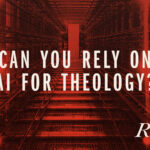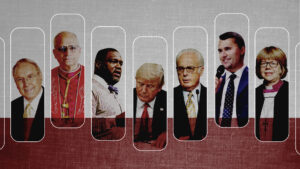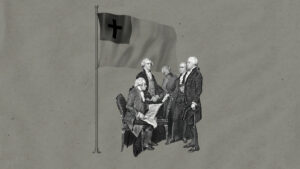The church members gathered for coffee hour at Redeemer Presbyterian Church knew something was wrong when the polite man quickly shouldering his way through the crowd—“Excuse me, excuse me”—was followed seconds later by uniformed police.
The man had robbed an adjacent parking garage and then raced into an alley to get away—an alley ending in the open door of the fellowship room where pastor Tim Keller was chatting with congregants after the service.
“The only exit from the church was to come back up to street level and come out the front door,” Kathy Keller remembers. The man found it, tearing out of the church right in front of Kathy and her three sons, who were sitting in their minivan waiting for Tim.
All three Keller boys—ages 6, 10, and 12—flew into the back seat to watch as police caught the man, threw him across the hood of the car parked behind them, and cuffed him.
“Which I have to say is one of the reasons I loved raising our kids in New York,” Kathy said. “You didn't have to lecture them about the evils of drink when they saw drunks vomiting on the sidewalk, nor on the dangers of theft when they saw thieves being cuffed six inches away from their noses.”
But to be honest, that wasn’t how she felt when Tim first suggested they move from Philadelphia to New York City to plant a church. In the late ’80s, New York was reaching the peak of its crack cocaine addiction. Violent crime rates had never been higher.
The spiritual scene wasn’t much better: Less than 1 percent of those in center city Manhattan self-identified as evangelicals. Without a lot more connections, experience, and money, you’ll have a really hard time, New York insiders told them. Odds are you won’t last five years.
But Keller’s plant has lasted nearly six times that long. When he preaches his last sermon on June 25, Redeemer will be 28 years old. Over nearly three decades, attendance has soared from around 50 to more than 5,000. The congregation expanded into two, then three locations. They ministered to thousands through Hope for New York, re-imagined employment through the Center for Faith and Work, and launched a church-planting hub now called City to City.
Through it all, Redeemer proved the impossible: You can grow an evangelical church in the middle of one of the most post-Christian, least Bible-minded cities in the United States.
And Saturday, when the congregation voted to split Redeemer’s campuses into three distinct churches, it wasn’t an ending so much as another beginning. Redeemer, which has helped to plant hundreds of churches in New York and around the world, is replanting itself.
Starting from Scratch
Tim Keller was his own third choice to pastor Redeemer. He was a professor at Westminster Seminary when the then-14-year-old Presbyterian Church in America (PCA) asked him to start a church in New York City. The idea was ambitious, both for a teenage denomination and also a 30-something seminary professor.
He said no, offering to help them find somebody else. That turned out to be harder than it looked; both men he asked also said no.
At the same time, he felt both put off and drawn to “the arrogance, fierce secularity, diversity, power, and spiritual barrenness” of New York, he wrote in Center City Churches in 1993. He began to wonder if this wasn’t what attracted missionaries to a new field.
He mentioned it to his wife, Kathy, who laughed. “Take our three wild boys (the victims of below-average parenting, as well as indwelling sin) to the center of a big city?” she wrote in 2012. “Expose them to varieties of sin that I hoped they wouldn't hear about until, say, their mid-30s? My list of answers to, ‘What is wrong with this picture?’ was a long, long one.”
She wasn’t wrong: New York circa 1990 wasn’t the ideal place to raise a family. Homicides peaked at 2,245 during Redeemer’s first full year, right in line with the rising violence in other American cities, as crack cocaine flooded the streets. (In comparison, New York had a record low 333 murders in 2014.)
The worship space the Kellers ended up renting, a Seventh-day Adventist church two blocks off Central Park, was in the most prosperous neighborhood in the city, the Upper East Side. Yet just three and a half weeks after Redeemer opened the doors, 28-year-old Trisha Meili was brutally raped and beaten as she jogged in the park; three years earlier, 18-year-old Jennifer Levin had been strangled and her body left there. The crime had spread everywhere.
“On a typical day in 1989, New Yorkers reported nine rapes, five murders, 255 robberies, and 194 aggravated assaults,” the New York Daily News reported. Carole Kleinknecht, who counted Redeemer’s offering for the first year or so, kept it safe between services by hiding it in paper lunch bags in the heating ducts in the back of the kitchen.
So it was no wonder that “New York was depopulating. Churches were selling their buildings,” said Carole’s husband, Glen, who moved to the city in the mid-’70s to work with Campus Crusade for Christ (now Cru). In 1980, Manhattan’s population fell to 1.4 million, the lowest in 100 years. By the end of the decade, apartment rents across the city were dropping—sometimes as much as 20 percent—for the first time since before World War II.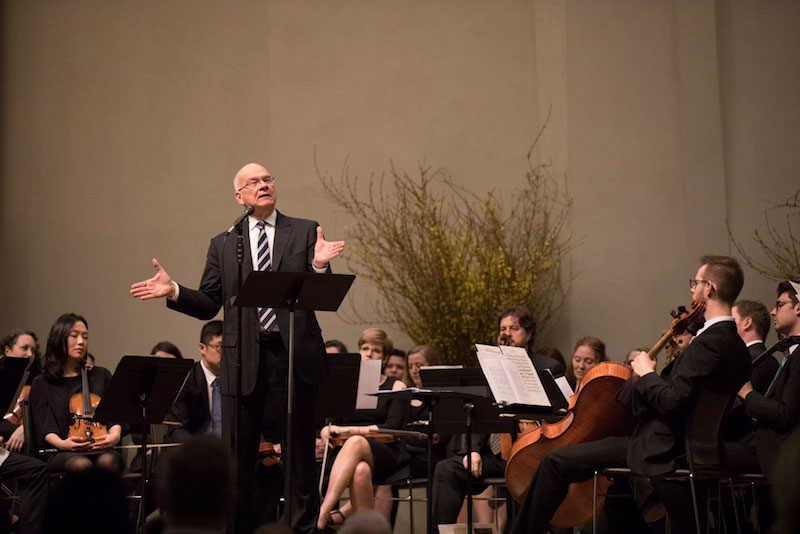
“Starting a church in New York City was something not just beyond my talent and ability, but pretty much beyond [the] talent or ability [of anybody] that I knew,” Keller said in a Redeemer video. “Therefore, if God was going to do it, he would not be doing it through the talent of the minister, but through . . . a person who loved and depended on him.”
Keller was reading The Christian in Complete Armor by Puritan William Gurnall, and came across Gurnall’s assertion that it takes more courage to be a Christian than an army captain. “I realized, ultimately—yes, I didn’t have the prayer life I should have, I didn’t have the love of God I should have—but ultimately, to not go was just simply cowardice. And it was not being faithful to the One who had the bravery to come from heaven to earth and go to the cross for me.”
So in February 1989, Tim and Kathy started driving up from Philadelphia to New York every Sunday afternoon. Keller led a Bible study with about a dozen people, a step of obedience that “broke open” his prayer life, he said.
They’d find a babysitter for the afternoon, but would always bring one son along. They wanted to acclimate the children to the city, and also to “show the people we were bringing our family here,” Keller said. “I wanted them to see our family, and not just me.”
It was a strong signal right off the bat: The Kellers were here to stay.
Their commitment to the city in turn inspired commitment to them. Congregants loved Keller’s vision for their home, his insistence that the city was valuable and worth reaching. Kleinknecht liked that view so much he committed to joining without ever hearing Keller speak.
He was in for a pleasant surprise.
Preacher
Keller’s first sermon at Redeemer was at 6:30 p.m. on April 9, 1989, two Sundays after Easter.
Nobody came.
“We said, ‘Well, there it is. God isn’t in this. We’ll pack up and go home,’” Kathy later wrote.
But 10 minutes later, dozens of people filled the pews. “No one had explained the New Yorker’s peculiar relationship to start times, something to do with public transportation as much as with ambivalence,” she wrote. (It took several more weeks of late-arriving congregants—and relief after early rushes of disappointment—to figure it out.)
“I felt awkward,” said Keller, who preached from Hebrews 7. “I liked my first sermon, but I’m not sure anybody else did.”
Carole Kleinknecht did. She remembers almost every word.
“I was so struck by his first sermon,” she said. “Mostly it was the subject, and God speaking to me. But part of it was realizing that, quite by accident, we had gotten the most compelling, gifted speaker.”
She wasn’t the only one who thought so. The 50-odd people who heard it came back, and then came back again with their friends. By September, Redeemer had 150 people coming to two services; by the end of the year, they averaged 250.
But Keller is a careful planner. (He keeps a detailed schedule several months out.) And even though the indicators were all good, the risk still scared him to death.
“I remember that for weeks and weeks and weeks, every morning I would wake up, and it was like there was a chasm open at my feet,” Keller said in a City to City interview. “I felt like if I strayed a couple of inches off, I’d fall in.”
He didn’t fall in. In June 1991, Redeemer stepped off of denominational assistance. With an average attendance of 725 and a budget of $583,000, the church plant’s success was jaw-dropping.
“Everyone who remembers those first three years says they’ve never seen anything like it,” Keller said. “We had conversions, a sense of God’s presence, changed lives—all the stuff everyone hopes for and we hoped for. But it was unusually thick and rich—beyond anything we expected.”
Keller had achieved what many critics thought couldn’t be done. Amid the crack cocaine and handguns, among Wall Street investors and liberal intellectuals, he preached a conservative theology replete with complementarianism, five-point Calvinism, and hell. And 15 years later, Christianity Today was calling Redeemer “one of Manhattan’s most vital congregations.”
If You Build It
Keller’s preaching style is calm and intellectual, much more professorial than firebrand. That fits well with the audience he keeps in mind while he prepares: unbelieving and ambitious intellectuals in academia, business, and the arts.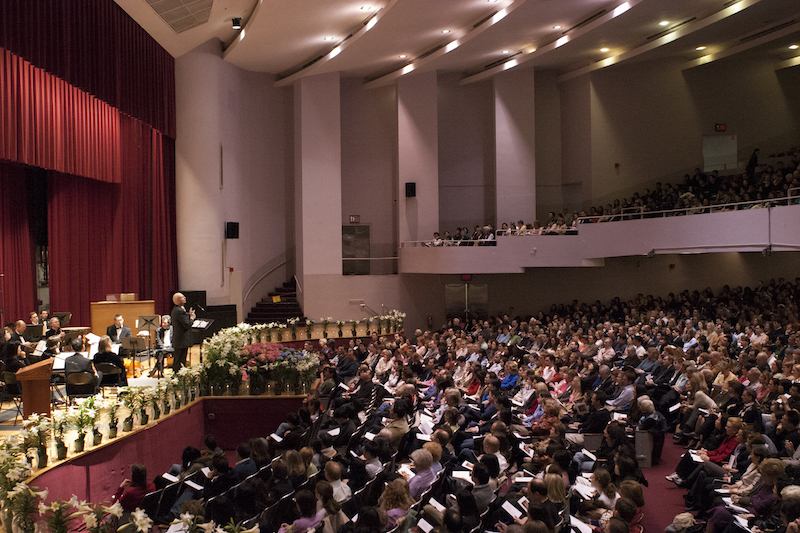
“The preacher has to anticipate questions and objections to the evangelical message that would be raised by Jewish persons, socialists, Wall Street brokers, aspiring actors, gay rights activists, politically correct graduate students, and young second-generation Asian-American professionals,” he wrote in Center City Churches in 1993. “If we always preached as if these kinds of people were present, they would come or be brought.”
In other words: “If you build it, they will come.” Or, more to the point, if you preach in this way, people will bring nonbelieving friends. And just like the White Sox came to Kevin Costner’s baseball field in Field of Dreams (the movie opened the same summer as Redeemer), Redeemer’s pews filled up. Three years old, the church had grown to a thousand mostly single professional people (there were only 30 children).
Each week about 60 people walked in for the first time. Keller estimated in Center City Churches that around 15 percent to 20 percent of those attending weren’t Christians. Only one-third had an evangelical background.
They were professionals (99 percent in 1993), city dwellers (91 percent) and gay (at least 12 percent). Twenty percent were non-white; of the Asians and Hispanics, four-fifths were second generation.
The professional trajectory would lead Redeemer to launch the Center for Faith and Work (CFW) ten years later. In 2015 alone, more than 240 people participated in courses connecting their work to their faith, about 1,000 people came to events on the doctrine of calling, and judges awarded prizes and grants to non-profit and for-profit ventures.
The multi-ethnic trajectory was harder to see in the early years. Today, Redeemer is about 45 percent Asian, second- or third-generation immigrants whose parents belonged to a wave of Koreans and Chinese landing in the city in the late 1980s and starting their own churches.
Most settled in Flushing, Queens, about 30 minutes from Redeemer. And, because Presbyterian missionaries hit Korea early, most were already Presbyterian.
It’s hard to tell exactly why they first flocked to Redeemer, but Keller has a theory.
“For the first year, when you walked in the door and looked up front, you saw two faces. You saw me and you saw the pianist, who was Chinese,” he said. “Next thing you know, about six months later, I look out there and I see white people and Asian people, and I’m wondering why. It could be that at some subliminal level, people walked in the door, they saw themselves up front, and they felt a little more welcome.”
Growing Up in New York
Redeemer grew more slowly but still steadily through the ’90s, with Keller preaching to intellectuals using 20-page bulletins designed for newcomers, explaining and including the liturgy, songs, and biblical texts. The church offered enough options to make anyone happy: a mix of historic and contemporary songs at 10 a.m., classical music at 11:30 a.m., a longer sermon with time for questions at 4 p.m. (question time was eventually expanded to every morning service), and a contemporary music service at 6:30 p.m. Some came twice; Keller preached a different sermon in the last service.
Eventually, not even multiple services were enough. But Redeemer was not originally meant to be a multi-site church. So when it grew too large for the rented space in the Adventist church, Redeemer moved a mile down the road to the 2,000-seat Hunter College auditorium.
Moving solved the seating problem, but not the park problem. The auditorium is two blocks from the east side of rectangular Central Park. But there are no subways underneath the park, and buses take a long time. So even though the park is only half a mile wide, Redeemer’s location on the east side wasn’t drawing many from the west side.
Planting a west side church was the natural answer. But in this case, it wasn’t that simple.
“[A west side plant] would be far enough away to reach new people who would not cross the park, but not far enough away to not be crushed” by the existing church, Keller said. Who would go to a small plant when the founding church and pastor were one mile away?
So Redeemer obtained a second campus on the west side in 1997, and was soon offering morning and evening services on both sides of the park.
Keller plays the long game, and knew he couldn’t pastor both sites forever. So in 2009 Redeemer began preparing for his retirement, laying down concrete plans for the multiple sites to become multiple congregations over the next decade. In October of 2012 they added a third location downtown. Each campus had a staff and lead pastor to care for the people at that location; Keller cycled among the three pulpits.
The goal was to strengthen the congregations until Keller’s retirement, when each would step out on its own and plant three new churches.
“This as a more constructive model than is often done where a large congregation is built very much around the personality of the preacher, and when that preacher’s gone, the whole thing kind of dissolves,” Capitol Hill Baptist Church pastor Mark Dever told Christianity Today.
Transforming into three daughter churches and nine granddaughter churches is fitting for Redeemer, which has championed church planting based on Keller’s reasoning that new congregations are the best way to draw new people. Eventually, they’d help to plant so many churches that Keller would co-write a manual on it and found the Church Planting Center—later City to City—to facilitate the work around the world.
Since its 2001 inception, City to City has helped to train more than 13,000 leaders and to start 423 churches around the world. But Keller’s favorite place to plant hasn’t changed: More than 100 of the churches were started in New York City. (While Redeemer’s daughter churches have all been Presbyterian, City to City provides training and help to evangelical churches of many denominations.)
Redeemer’s enthusiasm was catching. By the year 2000, evangelicals were planting 80 to 100 churches and ministries in New York every year. Many were working with, taught by, or inspired by Redeemer.
From 1 percent in 1990 to 3 percent in 2011 to 5 percent in 2016—slowly but significantly, the number of evangelicals in the heart of one of the country’s most secular cities was inching up.
Crime and Consequences
At the same time evangelical church plants were blooming, the city’s crime rate was plummeting, and its population was climbing.
Whether because of Mayor Rudy Guiliani’s zero-tolerance approach, a national easing of the crack cocaine habit, or an improving economy, the city’s homicide rate dropped 85 percent from 1990 to 2014. Transit crime dropped 87 percent. Rapes, robberies, and aggravated assaults all plummeted.
Redeemer was hard at work in the middle of it. In 1992, the church founded Hope for New York to organize volunteers, funding, and best-practices training for non-profits in New York. The organization started with one full-time staff member and a few volunteers. By 2016, it was giving away $1.4 million in grants, facilitating 43,000 volunteer hours, and watching 1.6 million people in New York be served by its affiliates.
The whole time, New York’s population was soaring, rising from 7.3 million in 1990 to nearly 8.5 million in 2014.
“When I first got there, two-thirds or three-fourths of the people who moved to New York came from overseas,” Keller said. “People inside America did not go to New York—it was scary and expensive. Today two-thirds of the people who move into New York every year are coming from America. It’s now a destination. People want to be there. It’s cool and hip.”
And then, right in the middle of New York’s two-decade turnaround, a pair of airplanes hit the World Trade Center towers.
9/11
Redeemer lost three members that day.
“I remember the smoke from downtown, visible everywhere for days,” Keller told TGC six years ago. “And the stench, the unique smell that also lasted for days. You could smell it everywhere. No one asked what the smell came from. We didn't want to know.”
The church was averaging about 2,800 people a week. On September 16, 2001, about 5,300 showed up. (That wasn’t unique to Redeemer. “The whole city was like that,” Keller said.)
“At one of our morning services, about 15 minutes before it started, the place was packed with lines out the back door,” Keller said. “So I pulled an audible with the musicians . . . and we had ushers go running out and tell people, ‘Come back in two hours and there will be another service.’”
Keller’s still a little surprised that they came back. “Eight or nine hundred people showed up for the second service, even though we’d never had one in that location before.”
He spoke on grief. “The love and hope of God . . . has to be rubbed into our grief, the way you have to rub salt into meat in warm climates,” he said. “Your grief is going to make you bleaker and weaker or it could make you far more wise and good and tender, depending on what you rub into it.”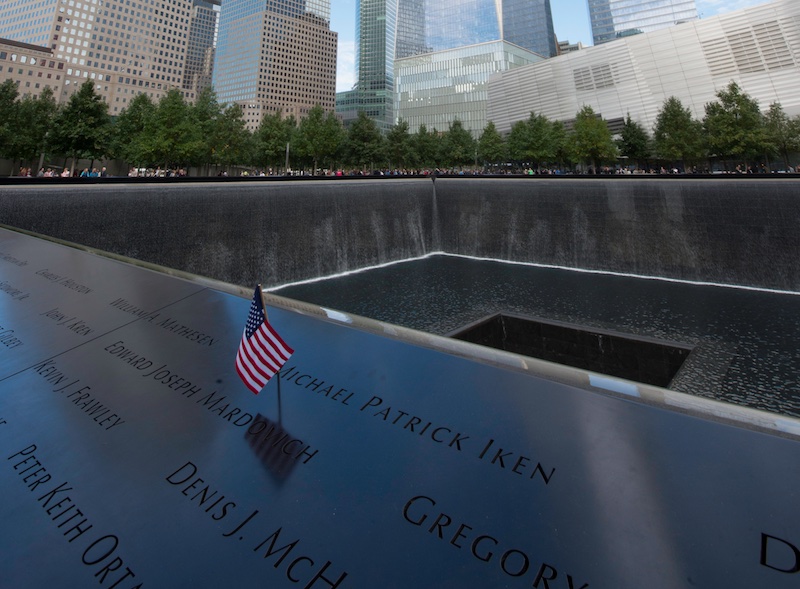
Not all of the new arrivals kept coming back, but many did. (One is now an elder.) Redeemer’s average attendance grew by about a thousand in one day, or about 35 percent. (Across the city, attendance at churches and synagogues rose about 20 percent, though it didn’t always last.)
At the same time, checks started arriving in the mail.
“Spontaneously, people from around the country sent in $2 million to be used as it was needed,” Keller said. “People took up offerings and just sent them to us because they knew we were there.”
Redeemer’s staff worked overtime, running on adrenaline for nearly a year. They focused on those who lost their jobs since, in addition to the towers, “14,000 or 15,000 small businesses that were south of 14th Street went away overnight,” Keller said. The economic loss hit New York and Redeemer hard. At one point, one-fourth of Redeemer’s elders were unemployed.
The church handed out Bibles, subway passes, and money. “We gave it all away,” Keller said. They also raised funds to beef up their overwhelmed counseling team.
But two years later, the energy and adrenaline had run out. “In hindsight, everybody was exhausted,” Keller remembers. “Both my wife and I had major illnesses during that time. Because of that, I kind of detached from the staff . . . . I somehow thought that it would run without me.”
It did for a while. But then “we looked around and realized the staff was unhappy. They felt detached from me. I had not been a good leader,” he said. “We actually had to rebuild the whole staff.”
The whole city was rebuilding, and many feared New York would backslide into the high crime rates and fleeing population of the 1980s and 1990s.
Instead, 9/11 had the opposite effect. Christian volunteers pouring into the city saw it wasn’t as scary and dangerous as they’d thought, sociologist Tony Carnes said. They stuck around. Crime was on the way out; churches were in.
Nearly 40 percent of Manhattan’s evangelical churches were planted after 2000, according to Carnes, editor and publisher of A Journey Through NYC Religions. During one two-month stretch in 2009, a new church opened its doors in Manhattan’s city center every week.
Pipeline
Redeemer was clipping along, developing leaders and helping to plant churches around the world. But City to City’s personal teaching could only go so far.
“We tried so hard to keep a low profile,” Kathy said. “If people asked Tim to appear on the radio or television, we always turned it down. But at one point, some businessmen in our congregation said, ‘If you want to see people carrying this vision forward, you need a pipeline. And in order for that to happen, you need higher visibility. That’s just the unvarnished truth.’”
“Tim put his head down on the table and said, ‘Oh, all right. I’ll write books.’”
He released The Reason for God: Belief in an Age of Skepticism in 2008. It promptly hit The New York Times bestseller list and garnered awards from Christianity Today and World magazines. He followed nine months later with The Prodigal God: Recovering the Heart of the Christian Faith. (“I’m not as prolific as that might seem; both manuscripts were finished at the same time, after years of work!” he later wrote.)
Ever since, there’s been a steady stream of titles, including Counterfeit Gods: The Empty Promises of Money, Sex, and Power, and the Only Hope that Matters; Generous Justice: How God’s Grace Makes Us Just; The Meaning of Marriage: Facing the Complexities of Commitment with the Wisdom of God; and Prayer: Experiencing Awe and Intimacy with God.
The Reason for God shot Keller’s name onto the list of influential evangelical leaders. He became a top conference headliner, notable enough to be covered by The New York Times, The Atlantic, Newsweek, and New York magazine. In 2005, he co-founded The Gospel Coalition.
His fame changed things around Redeemer. “It made us a popular destination for out-of-town guests,” Glen Kleinknecht said. Some Sundays it seems “half the church is guests from Europe,” and it’s impossible to tell the New Yorkers trying out church for the first time from the tourists.
All Grown Up
That will change July 1, as Keller steps out of the pulpit and back into his old profession of training new church leaders. He’ll be working with City to City and teaching courses for Reformed Theological Seminary in Manhattan as well as a full year of practical, urban ministry training called the City Ministry Year. The goal is to attract and train more people in the distinct skills of working in urban churches.
“In general, people who are trained and experienced in ministry elsewhere do not do as well when they move to global cities to minister,” Keller said. “We need to train people from the ground up right here. That’s what I am committing the rest of my life to do.”
The Redeemer congregations, standing alone, will have their own leaders and staff, run their own ministries, plant their own churches. Eventually, they’ll look less like Keller and more like their own pastors.
For Keller, that’s like watching a child get married.
“You get moved when you’re at the weddings [of your children] and realize this person is really going to somebody else, and now you’re important, but you’re not No. 1 at all anymore,” he said. “That’s exactly what it’s like. . . . It’s sense of loss but also a sense of relief. Obviously, as much as we love our children, the greatest tragedy is when they can’t grow up, or they don’t grow up either mentally or emotionally.”
Redeemer’s Influence
It’s hard to calculate just how far Keller’s and Redeemer’s influence have reached.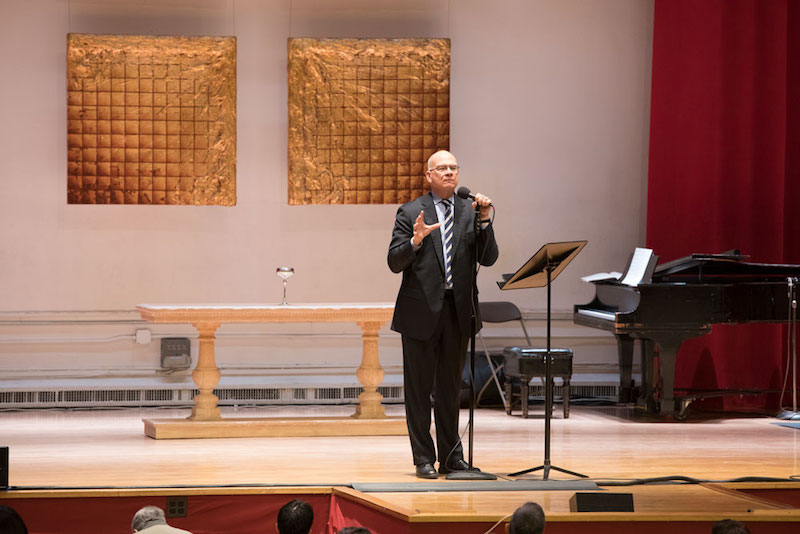
For starters, they have given Reformed theology “a face, and made it softer, kinder, more compassionate,” said Richard Doster, editor of the PCA’s denominational magazine.
They have also “certainly broadened the perspective in who we work with in church planting,” he said. “You see Keller, at an individual church level, demonstrate a level of collaboration within a city, across denominational lines. That influences us to say, ‘We can work with these people. We don’t have to do it by ourselves, within these borders. We can work with others.’”
New York “was already changing profoundly by the time Keller came,” said Carnes, who has written about Redeemer since the 1990s.
“The spiritual changes started around 1978 in the boroughs (Queens, Brooklyn, Bronx, and Staten Island), but hardly anyone noticed that this was happening . . . because there was little presence of these changes in the center of the city,” he said. “Once Keller gained a beachhead in Manhattan center city, there was a galvanizing effect on the whole city.”
Manhattan is the secular symbolic center to the city, Carnes said. “Once you have altered the symbolism of the center to include religion, and the Christian gospel specifically, people’s mindsets started to change.”
And “because New York City also occupies mindspace around the world,” Carnes said, “a change in its symbolic center starts to have global effects.”
Keller’s still after that symbolic center. He wants the number of evangelicals in New York to triple in the next 10 years—from 5 percent to 15 percent.
“Even more than money, the main thing we need is leaders,” he told his congregation when announcing his career change and intention to train church planters full-time. Then he gave them the same commitment he’s promised since he hauled his children, one at a time, to meet the city.
“Kathy and I are not going anywhere. New York is our home, and you are our people.”
Free Book by TGC: ‘Before You Lose Your Faith’
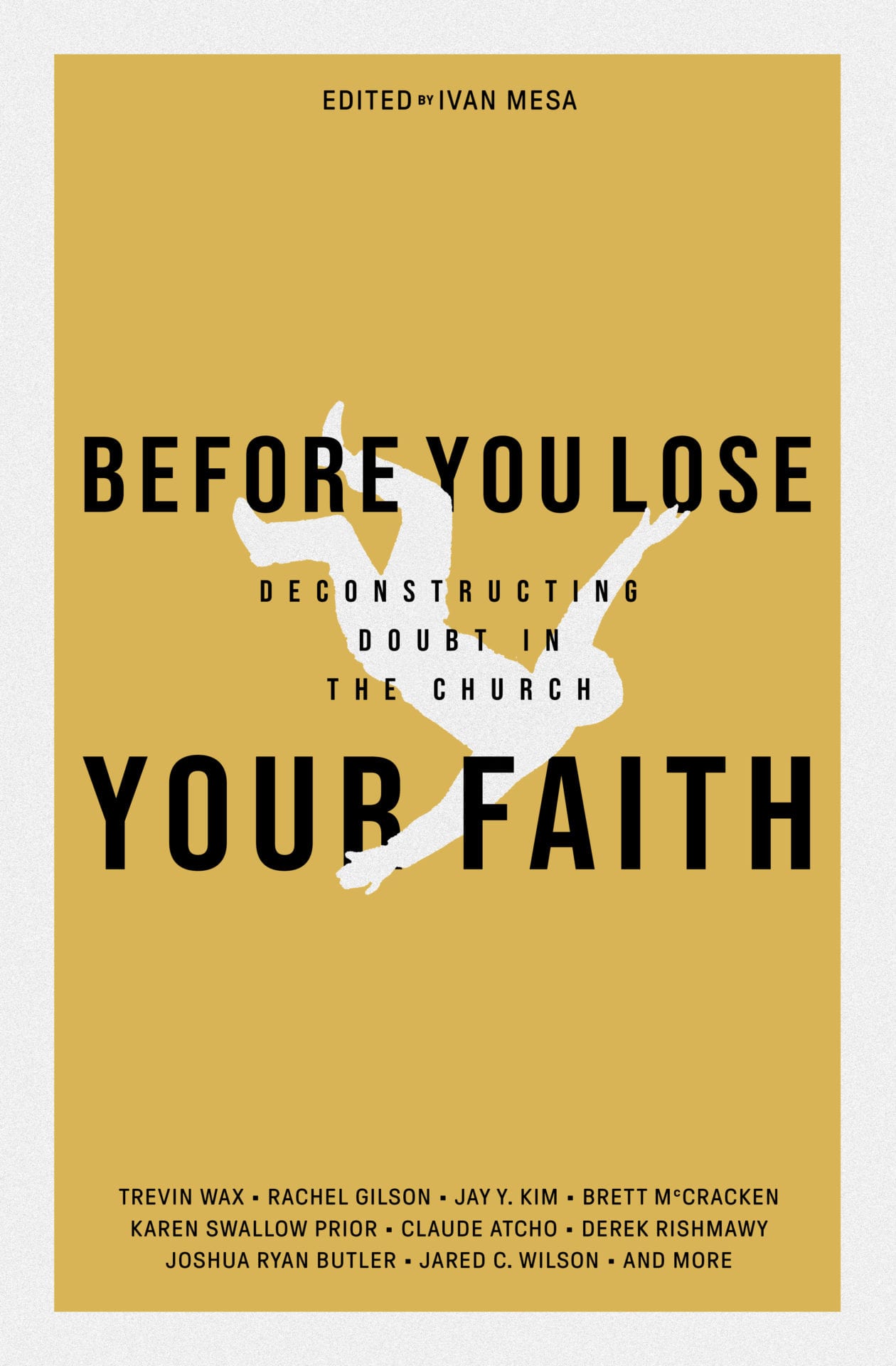 Many young people are walking away from Christianity—for reasons ranging from the church’s stance on sexual morality, to its approach to science and the Bible, to its perceived silence on racial justice.
Many young people are walking away from Christianity—for reasons ranging from the church’s stance on sexual morality, to its approach to science and the Bible, to its perceived silence on racial justice.
TGC’s book Before You Lose Your Faith: Deconstructing Doubt in the Church is an infusion of hope, clarity, and wisdom in an age of mounting cynicism toward Christianity.
For anyone entering college or the workplace and looking for a timely reminder of why Christianity is good news in a skeptical age, make sure to get your FREE ebook Before You Lose Your Faith today!











